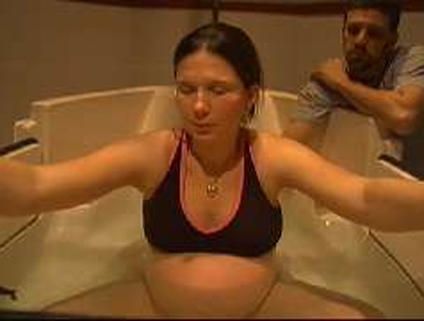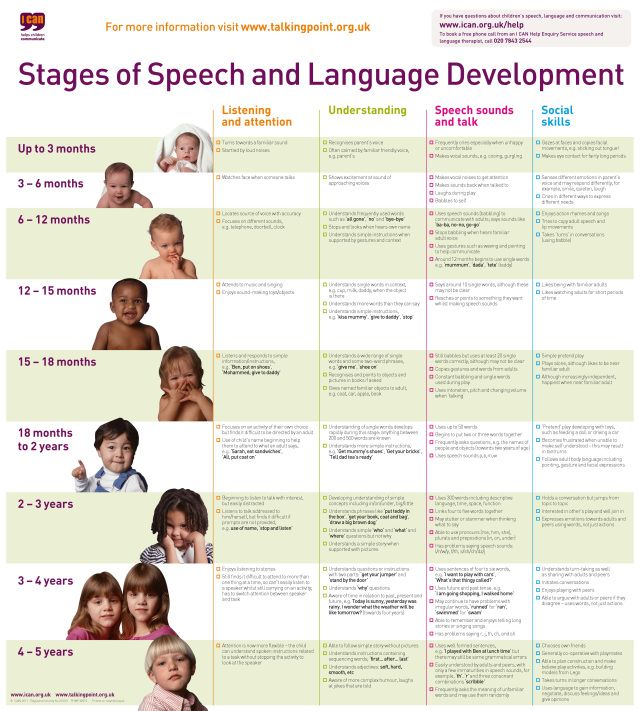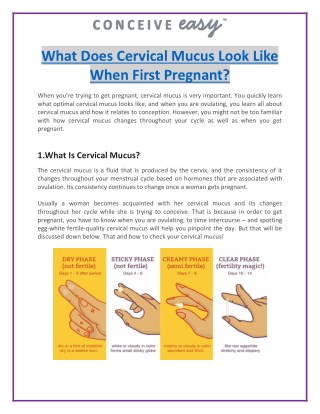Live birth natural
Woman giving birth: Live birth video
Narrator: Samiyyah is the owner of a day spa in Philadelphia. She is 38 weeks pregnant with her second child.
Samiyyah: With the first pregnancy, I delivered in a hospital, and it was very restricting, you know, being confined to the bed, not being able to, you know, move when I felt my body wanted me to do certain things.
Narrator: For her son Safi's birth, she was given pitocin to speed up labor, an epidural for pain management, and an episiotomy (a surgical cut to widen the vaginal opening).
This time, she's planning a natural delivery -- without pain medication and other medical interventions -- at a birth center.
Samiyyah: Yes, I've been told that I am completely crazy for being, you know, for not having the drugs, but I've been there and I didn't like it, so I figured I would try this. It's healthier for the baby; it's healthier for me. So why not? I mean, women, we were designed to do this.
Narrator: Seven days after her due date, Samiyyah's labor kicks into gear. At the birth center in Bryn Mawr, Pennsylvania, Julia Rasch, a licensed nurse/midwife, performs an internal exam and starts an IV line to give Samiyyah a dose of antibiotics, since she's positive for Group B strep.
Samiyyah is 3 centimeters dilated, 100 percent effaced, and her water hasn't broken yet, which is common in the first stage of labor.
Birth centers offer a more relaxed and intimate alternative to hospitals for women expecting uncomplicated births.
It's important to choose a birth center with nearby hospital privileges in case of an emergency.
Helping her through her first natural birth is her husband, Arvan. Her mother-in-law, Irena, and 6-year-old son Safi are there for support.
Samiyyah: We've talked about, you know, what he's gonna see, we've shown him pictures, and I think he'll be okay.
Narrator: As Samiyyah's labor progresses, her baby's heart rate is monitored every 15 minutes.
Samiyyah: My goal is to remain calm and try to stay level-headed.
Narrator: As her contractions pick up, she starts experiencing painful back labor, typically caused by the baby's head pressing against the lower spine.
Samiyyah finds some relief by trying a combination of slow steady breathing, constant deep massaging and counterpressure, spending lots of time in a heated Jacuzzi, and trying different labor positions.
Arvan: She's doing great. She's doing great. She's really pushing through.
Narrator: Her midwife feels it's time to break her water with an amni hook, since she can feel the amniotic sac bulging. This is a common procedure and usually helps speed up the labor process.
Samiyyah: I thought it would be painful, but it wasn't at all. Actually it was like a relief of pressure.
Midwife Julia Rasch: Large amount of clear fluid. Beautiful.
Narrator: Her contractions now intensify as she starts to feel the urge to push. This is called hard labor or transition. The muscles your body uses to contract are transitioning from dilating the cervix to pushing the baby down and out.
Midwife: The intensity of the contractions is increasing, and just a certain force is now really behind that baby coming.
Narrator: Transition can be the most painful part of labor -- but usually the shortest phase.
Narrator: Though most mothers dilate nearly 8 to 10 centimeters before transitioning, Samiyyah is only 5 centimeters dilated and is having trouble resisting the urge to push.
Arvan: Sam, do not push. Fight it. Fight it.
Samiyyah: I'm trying!
Narrator: Her midwife agrees her body is ready to deliver. Pushing before being fully dilated is uncommon. This is why each caregiver has to manage her patient's labor on an individual basis.
Midwife: Okay now, take a breath and do it again.
Narrator: Her midwife uses her fingers to pull back her cervical opening as Samiyyah pushes.
The midwife made the right decision, listening to her body. With just 11 minutes of pushing, Arvan and Samiyyah's baby emerges.
Samiyyah: [screams]
Arvan: Good job! Good job!
Midwife: There's your baby!
Narrator: Sami Sarrajj, a healthy boy, is placed immediately on his mother's chest.
Midwife: You did it! You did it!
Narrator: Dad cuts the umbilical cord, and the midwife collects some of the cord blood for routine testing.
It's not over yet. The midwife helps deliver the placenta, and a nurse presses on the fundus -- the upper part of the uterus -- to check how much the uterus has contracted.
Applying pressure is a common practice used by caregivers to help expel excess blood.
Samiyyah tore along her previous episiotomy line, and her midwife repairs it with stitches, which takes 15 minutes to complete.
Arvan: You did a hell of a job... Yeah!
Narrator: Samiyyah is now breastfeeding and bonding with her baby. Incredibly, in an hour, she is showered up and savoring some well-deserved fettucini Alfredo.
It was a fast delivery, with just four hours and 11 minutes of labor. Samiyyah's natural birth is a success, and she's ready to try it again.
Samiyyah: One more. We're going to try for a girl. (laughs)
Narrator: Everyone played a supportive part on the birth team… Even big brother Safi got to announce the news that his brother was born.
Live birth: Water birth | Video
Narrator: We women love our tub time, and Mary is no exception. As a labor and delivery nurse, she's seen the best and worst of birth. For her, warm water is the ultimate pain reliever during labor.
Mary: I want to use the water to help me cope naturally with the contractions or the surges and to help me deliver the baby in a more calm environment.
Mary and Dean tried water birth for the first time with their daughter Aubrey's delivery. The experience was so positive they're headed to the tub again for the birth of their fourth child.
Mary: I will have two by land and hopefully two by sea.
Midwife Karen Shields: Baby's head is right here. Perfect position for labor, which is great.
Mary: Good girl!
Midwife: A water birth is my favorite way to catch a baby.
Narrator: Karen Shields, Mary's midwife, has delivered over 200 babies in the water.
Midwife: Everything has to be going terrifically for the baby to be born in water, as you know.
The baby's heartbeat has to be what we call reactive, which means that the baby's, when the baby moves, the heart rate goes up. And there's no areas where the baby's heart rate is going down and that your blood pressure's normal and everything's good.
Narrator: You should not attempt a water delivery if you have high-risk prenatal issues such as diabetes, high blood pressure, or preeclampsia; you plan to use any pain medication; or your labor will be induced.
While laboring in a warm tub has become more acceptable as a way to cope with pain during labor, actual underwater birth is still unconventional and considered risky. It's not recommended by the American College of Obstetricians and Gynecologists.
If you're considering a water birth, talk to your caregiver about the risks and benefits.
It's important to decide in advance what tub you'll be delivering in. You can use your bathtub if it's big enough, but most women either buy or rent a special birthing tub. Ask your midwife what she recommends.
Ask your midwife what she recommends.
Mary will be using a tub at the New Jersey Hospital System -- Elmer that's specifically designed for water birth. This tub keeps the water warm and has three access points for getting in and out in case of an emergency.
After a long wait, Mary's labor kicks in ten days after her due date. It's 9:30 p.m., and her water hasn't yet broken.
Midwife: You're about 80 percent thinned out.
Mary: Yes, we got our 80, girls.
Narrator: Mary is using HypnoBirthing techniques, dim lights, and soothing music to stay relaxed and get through her labor. After four and a half hours, Mary has progressed to 7 centimeters. The birthing tub is prepped.
The midwife breaks her water with an amni hook. This is done before entering the tub to make sure the amniotic fluid is clear and free of meconium.
The safe and comfortable water temperature for mother and baby is between 98 and 101 degrees.
While Mary's in the tub, she moves into the transition stage of labor. This is the most intense part of labor, but the water seems to be helping.
This is the most intense part of labor, but the water seems to be helping.
Midwife: It helps her mobility. It helps prevent tearing. It helps the mother's blood pressure be lower. And just really gives her an overall feeling of comfort and relaxation.
Narrator: The baby's heart rate is monitored underwater. It's hard to believe Mary is just minutes away from giving birth.
The mood is calm and peaceful, and Mary gently rocks her hips as she focuses on her baby descending into the birth canal.
Mary gets in position to deliver. Two nurses hold her legs back as the baby's head begins to crown.
Midwife: OK, I want a big push this time.
Narrator: With the next push, the baby's head is visible.
The midwife quickly lifts the umbilical cord, which has wrapped around the baby's neck during delivery and makes her appear bluish.
While she's underwater, the baby is receiving all her oxygen through the umbilical cord.
The midwife holds the baby's head for the final push.
Midwife: Here we go…
Narrator: Mary and Dean's baby daughter Ashlind is born.
In seconds, she's brought to the surface.
Midwife: Hi, beautiful. Let's float her a little.
I think the reason I like water birth so much is the baby's reaction. They come out so calm and relaxed. Their whole body just unwinds, and you can see the stress just leave them.
Narrator: Parents often wonder why a baby born underwater doesn't swallow the water or, even worse, drown. [Midwife] Karen Shields believes babies have an innate ability to avoid this.
Midwife: There's what's called the natural dive reflex in babies, and that is so they don't take a breath underwater.
The stimulus for a baby to breathe is atmosphere or air on the cheek. That is what makes the baby take that initial breath.
Narrator: The umbilical cord reacts to the air as well.
Midwife: Until the cord comes up and is actually hit by the air, that's when the cord constricts and the blood flow is stopped to the baby.
Narrator: In two minutes, Ashlind, covered in vernix, is breathing on her own, and Dad cuts her cord.
Mary gave birth to a healthy 8 pound, 15 ounce baby.
The water birth was everything she hoped it would be.
Blastocyst stage embryo transfer versus cleavage stage transfer in artificial insemination
This translation is out of date. Please click here for the latest English version of this review.
Survey question
We tried to find out if blastocyst stage embryo transfer (day 5-6) increases live birth rate with fresh transfer and overall pregnancy rate (after both fresh and cryotransfer) compared to cleavage transfer (2-3 days). nine0003
Relevance
When using assisted reproductive technologies (ART), such as in vitro fertilization (IVF), intracytoplasmic sperm injection (ICSI), embryo cryopreservation, embryos are transferred to the uterus both at the cleavage stage (2-3 days after egg collection) and at the blastocyst stage (5-6 days after egg collection). Until recently, during most ART cycles, embryos were transferred at the cleavage stage, but there is also a trend towards transfer at the blastocyst stage, since it is at this time that the embryo enters the uterus during the natural cycle. nine0003
Until recently, during most ART cycles, embryos were transferred at the cleavage stage, but there is also a trend towards transfer at the blastocyst stage, since it is at this time that the embryo enters the uterus during the natural cycle. nine0003
Study profile
We included 27 randomized controlled trials (RCTs) involving 4031 women. The evidence is current to April 2016.
Main results
There was low-quality evidence for higher live birth rates and moderate-quality evidence for a higher rate of clinical pregnancy with "fresh" blastocyst transfer compared with "fresh" cleavage transfer. If during the transfer at the stage of crushing it was possible to achieve a live birth in 29% of women, then when transferred to the blastocyst stage - in 32-42%. There was no evidence-based difference between groups in overall/cumulative pregnancy rates (whether fresh or cryotransfer after egg retrieval), but the quality of the evidence for this outcome is very low. Thus, although transfer at the blastocyst stage is preferred in "fresh" cycles, it remains unclear whether the age of the transferred embryo (day of transfer) affects the overall/cumulative live birth and pregnancy rates. There was no evidence-based difference between groups in rates of multiple pregnancy and miscarriage rates, but the quality of these data is low. Future RCTs should focus on live birth rates, total/cumulative live birth rates, and miscarriage rates to ensure that well-informed decisions are made when choosing ART. nine0003
Thus, although transfer at the blastocyst stage is preferred in "fresh" cycles, it remains unclear whether the age of the transferred embryo (day of transfer) affects the overall/cumulative live birth and pregnancy rates. There was no evidence-based difference between groups in rates of multiple pregnancy and miscarriage rates, but the quality of these data is low. Future RCTs should focus on live birth rates, total/cumulative live birth rates, and miscarriage rates to ensure that well-informed decisions are made when choosing ART. nine0003
Quality of evidence
The quality of the evidence was low for most outcomes. The main reasons for this were a serious risk of bias (bias) associated with an insufficient description of randomization methods, and an unspecified or high risk of bias associated with the dropout (loss) of some participants.
Translation notes:
Translation: Mikhail Evgenievich Kukushkin. Editing: Ziganshina Lilia Evgenievna. Project coordination for translation into Russian: Cochrane Russia - Cochrane Russia (branch of the Northern Cochrane Center on the basis of Kazan Federal University). For questions related to this translation, please contact us at: [email protected]; [email protected]
For questions related to this translation, please contact us at: [email protected]; [email protected]
HeadGalina Titova StaffThe laboratory consists of 16 employees, including:
Research interests
Main publicationsMonographs: Batygina T.B. Biology of plant development. Symphony of Life / bilingual edition / Ed. Dondua A.K., Ermakov I.P., Sharova E.I. . St. Petersburg: DEAN Publishing House, 2014 . 764 p. Batygina T. B. Morphogenetic Developmental Programs. Stem cells . Nova Science Publishers Inc. USA. 2011 . 163 p. Embryology of Flowering Plants. Terminology and concepts. Vol. 1. Generative Organs of Flower . 2002 . Vol. 2. Seed . 2006 . Vol. 3. Reproductive systems . 2009 . Ed. Batygina T. B. Science Publishers, Inc. Enfield, NH, USA. Batygina TB, Bragina EA, Ereskovsky AV, Ostrovsky AN Live birth in plants and animals: invertebrates and lower chordates (textbook) . St. Petersburg: St. Petersburg State University, 2006 . Articles: Vinogradova G.Yu., Zhinkina N.A. Why does only one embryo sac develop in the Paeonia ovule with multiple archesporium? Plant Biology . 2021 . 23(2): 267-274. Voronova O.N., Babro A.A. Formation of the embryo sac, development of the ovule and seed in Helianthus ciliaris and H. tuberosus (Asteraceae). Botanical Journal . 2021 . 106(3): 239–254. Smolikova G., Shiroglazova O., Vinogradova G., et al. Comparative analysis of the plastid conversion, photochemical activity and chlorophyll degradation in developing embryos of green-seed and yellow-seed pea ( Pisum sativum ) cultivars. Functional Plant Biology . 2020 . 47(5): 409-424. Kruglova N.N., Titova G.E., Seldimirova O.A., Zinatullina A.E., Veselov D.S. Embryo of Flowering Plants at the Critical Stage of Embryogenesis Relative Autonomy (by Example of Cereals). Voronova O.N. Chapter 3. Stages of Sunflower Development: Correlations in Male and Female Reproductive Structures Formation. nine0099 Sunflowers: Cultivation, Uses and Ecological Significance. Ed. Érico de Sá Petit Lobão . New York: NOVA Science Publishers. 2020 . 33-52. Andronova E.V., Kovaleva A. A., Evdokimova E. E, Nazarov V. V., Semeonov A. V. Fruitage and seed viability of Orchis purpurea (Orchidaceae) at the northeast limit of distribution. The International Journal of Plant Reproductive Biology . 2020 . 12(1): 56-66. Shamrov I.I., Anisimova G.M., Babro A.A. Early stages of another development in flowering plants. nine0099 Botanica Pacifica. A journal of plant science and conservation . 2020 . 9(2): 1-10. Titova G.E., Yakovleva O.V., Zhinkina N.A., Nyukalova M.A., Geltman D. Andronova E., Butuzova O., Torshilova A. Mechanisms of seed dormancy in Cardiocrinum cordatum var. glehnii (Liliaceae). Botanica Pacifica. A journal of plant science and conservation . 2019 . 8(2): 19-24. Brukhin V., Osadtchiy J.V., Florez-Rueda A.M., Bakin E., Nobre M.S., Smetanin D., Grossniklaus U. The Boechera Genus as a Resource for Apomixis Research. Frontiers in Plant Science - section Plant Breeding . 2019 . 10: 392. Bessonov N., Butuzova O., Minarsky A., Penner R., Soule C., Tosenberger A., Morozova N. Morphogenesis software based on epigenetic code concept. nine0099 Comp. Struct. Biotechnol. J. 2019 . Torshilova A.A. The process of double fertilization in Dioscorea nipponica and D. caucasica (Dioscoreaceae). Botanical Journal . 2018 . 103(3): 283-296. Butuzova OG Peculiarities of seed formation in Pulsatilla vulgaris and Helleborus niger (Ranunculaceae) with predevelopment of the embryo. Botanical Journal . 2018 . 103(3): 313-330. Vinogradova G.Yu. Endosperm development in Allium schoenoprasum and A. ramosum (Alliaceae). Botanical Journal . 2018 . 103(11): 1451-1471. Babro A.A., Shamrov I.I., Anisimova G.M. Features of the development of microspores Rhododendron schlippenbachii and R. luteum (Ericaceae) before leaving the state of autumn-winter dormancy. Botanical Journal . 2018 . 103(11): 1472-1482. nine0003 Pushkareva L.A., Vinogradova G. Filippov E.G., Andronova E.V. Population genetic structure and natural hybridization of Dactylorhiza salina and D. incarnata (Orchidaceae). Genetics . 2017 . 53(3): 310–323. Torshilova A.A., Vinogradova G.Yu., Titova G.E. Development of female gametophyte in Dioscorea caucasica (Dioscoreaceae). The International Journal of Plant Reproductive Biology . 2017 . 9(2): 148-152. Titova G.E., Seldimirova O.A., Kruglova N.N., Galin I.R., Batygina T.B. The phenomenon of “Syamese embryos’ in grasses in vivo and in vitro : cleavage polyembryony and fasciations. Russian Journal of developmental biology . 2016 . 47(3): 122-137. Voronova O. |

 V.).
V.).  132 p.
132 p.  Russian Journal of developmental biology . 2020 . 51(1): 1–15.
Russian Journal of developmental biology . 2020 . 51(1): 1–15.  V. Seed development in some species of sections Lathyris, Holophyllum and Myrsiniteae subgenus Esula genus Euphorbia (Euphorbiaceae). Botanical Journal . 2019 . 104(4): 528-568.
V. Seed development in some species of sections Lathyris, Holophyllum and Myrsiniteae subgenus Esula genus Euphorbia (Euphorbiaceae). Botanical Journal . 2019 . 104(4): 528-568.  17:1203-1216.
17:1203-1216.  Yu., Titova G.E. Reproductive biology Pinguicula vulgaris (Lentibulariaceae) in the Leningrad region. Botanical Journal . 2018 . 103(12): 1501-1513.
Yu., Titova G.E. Reproductive biology Pinguicula vulgaris (Lentibulariaceae) in the Leningrad region. Botanical Journal . 2018 . 103(12): 1501-1513. 












